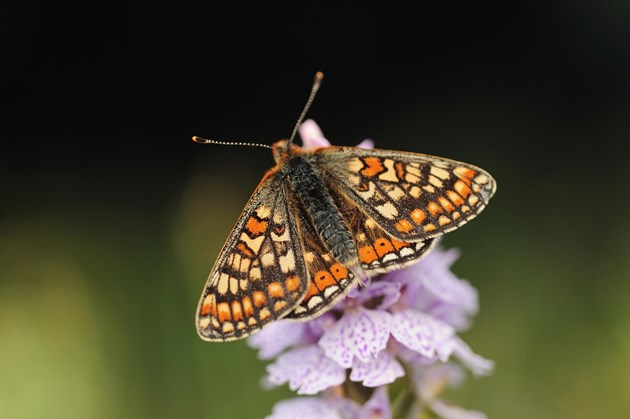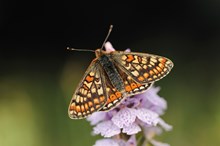31 May, 2023
REVISED: Over 75% of Scotland’s protected site natural features in good condition

Official statistics published today by NatureScot show that more than three quarters (76.4%) of Scotland’s natural features on protected nature sites are either in or recovering towards a favourable condition. Natural features include habitats and species, as well as geological features such as fossil beds and caves. Cooperative work with landowners on protected areas is key to improving the condition of sites.
However, although there has been a long-term improvement of just under half a percent compared to 2007, there has been a slow decline in the number of features in favourable condition in recent years.
Two of the largest causes of unfavourable condition are overgrazing and invasive, non-native species. To combat these effects, NatureScot is leading work to reduce deer numbers in areas where populations are affecting habitats adversely, implementing the recommendations of the Deer Working Group (DWG). NatureScot is also helping fund a number of projects to reduce invasive species, such as the Scottish Invasive Species Initiative and removing non-native rhododendron as part of the Alliance for Scotland’s Rainforest partnership.
Another factor is climate change. The effects of climate change are likely to be demonstrated through small changes across large areas over a long period of time. In many cases, the condition of an individual feature is affected by broader factors, such as species breeding or spending the winter in other areas due to climate change or other factors. However, declines on individual sites can be improved with new measures over larger areas.
Ongoing work to restore nature in Scotland includes the Scottish Government’s Scottish Biodiversity Strategy, which aims to deliver transformational change to protect and restore terrestrial, freshwater and marine biodiversity in Scotland; the Scottish Government’s £65 million Nature Restoration Fund (NRF), which funds projects that restore wildlife and habitats; the Scottish Marine Environmental Enhancement Fund (SMEEF), working to transform the health of Scotland’s coasts and seas; and the Species on the Edge project..
Biodiversity Minister Lorna Slater said:
“While it is encouraging that over three quarters of Scotland’s natural features are in good or recovering condition, we must do more to reverse biodiversity loss and protect our vital habitats and species.
“The Scottish Government is clear that this is an emergency that requires an emergency response. We are already investing in our land and at seas through our £65 million Nature Restoration Fund, expanding nature networks and establishing a new National Park.
“Later this year we will publish a delivery plan to support our new Biodiversity Strategy, which sets out a long-term ambition and vision to restore Scotland’s natural environment. It is designed to deliver landscape-scale, transformative change and will be backed by evidence and underpinned by statutory targets for nature recovery.”
Nick Halfhide, NatureScot’s Director of Nature and Climate Change, said:
“Scotland is facing a nature and climate emergency and protected areas have a vital role to play in helping us build resilience in the face of the climate change and biodiversity loss crises.
“Protected areas are often small and isolated from other natural areas. So although it’s possible to improve some species and habitats with work on one site, we also have to look at the situation more widely. This isn’t something we can do on our own; we all need to play our part to protect Scotland’s nature and to champion the work of land managers who are improving nature on these sites. We’re committed to protect, restore and value these special areas through collaboration, respect and evidence-based work with partners.”
Download the full statistical publication.
ENDS
Contact information
- Name
- NatureScot Media
- Telephone
- 0131 316 2655
- media@nature.scot
Notes to editors
The report draws on annual monitoring carried out by NatureScot of the condition of the 5,591 natural features across Scotland. As of 31st March 2023, 5,365 natural features were assessed, divided into three categories: habitats (75.1% in favourable condition), species (72.2% in favourable condition) and earth sciences, which includes geographical outcrops and landforms, fossil beds, and caves (95.6% in favourable condition).
NatureScot’s Site Condition Monitoring (SCM) programme began in 1999 to examine the condition and status of over 1,800 protected areas and their 5,591 natural features on protected natural sites in Scotland. All features are considered to be important at the national (Sites of Special Scientific Interest), European (Special Area of Conservation and Special Protection Area) and international (Ramsar) levels. Research is carried out by NatureScot staff and specialist contractors.
NatureScot is Scotland's nature agency. We work to enhance our natural environment in Scotland and inspire everyone to care more about it. Our priority is a nature-rich future for Scotland and an effective response to the climate emergency. For more information, visit our website at www.nature.scot or follow us on X at https://x.com/NatureScot
’S e NatureScot buidheann nàdair na h-Alba. Bidh sinn a’ neartachadh àrainneachd na h-Alba agus a’ brosnachadh dhaoine gu barrachd suim a chur ann an nàdar. Tha e mar phrìomhachas againn gum bi nàdar na h-Alba beairteach agus gun dèilig sinn gu h-èifeachdach le èiginn na gnàth-shìde. Tha an tuilleadh fiosrachaidh aig www.nature.scot no air X aig https://x.com/NatureScot

